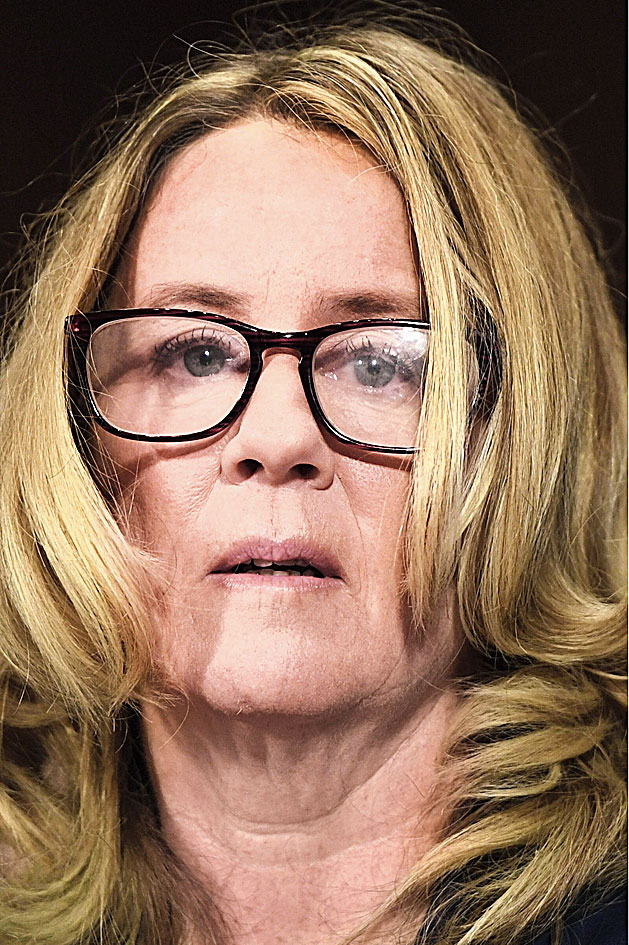She dressed modestly, in a navy suit and dark-rimmed glasses. No flashy jewellery, little makeup.
She is a professor and psychologist with an impressive CV.
She is white, and blonde, and pretty — but not too pretty — with an intact family, suburban home and children.
She teared up in her testimony — her voice cracking — but she did not openly cry or break down.
And she smiled! She pleaded for caffeine and joked about Google interns renting out her home.
“These are all codes for ‘she is displaying proper expectations of femininity,’” said Marianne Cooper, a sociologist at Stanford who studies gender inequality.
“Women are walking a very fine line. Too much or too little of something can lead people to discredit them. That so many people found Blasey Ford credible suggests that she was able to get across that tight rope and not fall off.”
In other words, Christine Blasey Ford, the woman who on Thursday told the Senate Judiciary Committee in excruciating detail that Brett M. Kavanaugh had sexually assaulted her when they were teenagers, was everything a victim is supposed to be.
Whether or not Judge Kavanaugh ends up on the US Supreme Court, the hearing was nothing short of a watershed moment.
It was perhaps the most important one since 1991, when women gathered around water coolers and in airport lounges to watch Anita Hill testify about Clarence Thomas — effectively educating a generation about the definition of workplace sexual harassment.
And if it provided a similar generational schooling on the nuances and lasting repercussions of teenage assault, it was also a stark reminder of the gender dynamics, and mental gymnastics, required of women who speak up (or speak at all).
There was the offhand remark by the Senate majority leader, Mitch McConnell, about the “female assistant” who would question Blasey — actually a seasoned prosecutor of sex crimes, Rachel Mitchell. There were the repeated interruptions by male senators of the women in the room, starting in the first minutes with the Republican chairman, Senator Charles E. Grassley.
It is worth keeping in mind that the Senate is a place where, up until a decade ago, women were not allowed in the swimming pool because the men liked to swim naked. It remains an institution where women cannot enter the floor with their shoulders showing, and it has struggled to figure out how to solve its own misconduct problem.
And, of course, the Republican members of the Judiciary Committee are all men.
That is one thing that has not changed since 1991.
But Blasey was not forced to reckon with the racial components of Prof. Hill’s hearing. Justice Thomas called the charges against him a “high-tech lynching” while Prof. Hill, as a black woman, faced a complicated interplay of racism and sexism.
Unlike Prof. Hill, who was accused of bringing “sleaze” into the Senate, Blasey instantly won very public support, including from numerous senators who declared on Thursday: “I believe you.”
Even Senator Orrin Hatch — who implied in 1991 that parts of Prof. Hill’s testimony had been adapted from The Exorcist — called Blasey an “attractive” witness.











